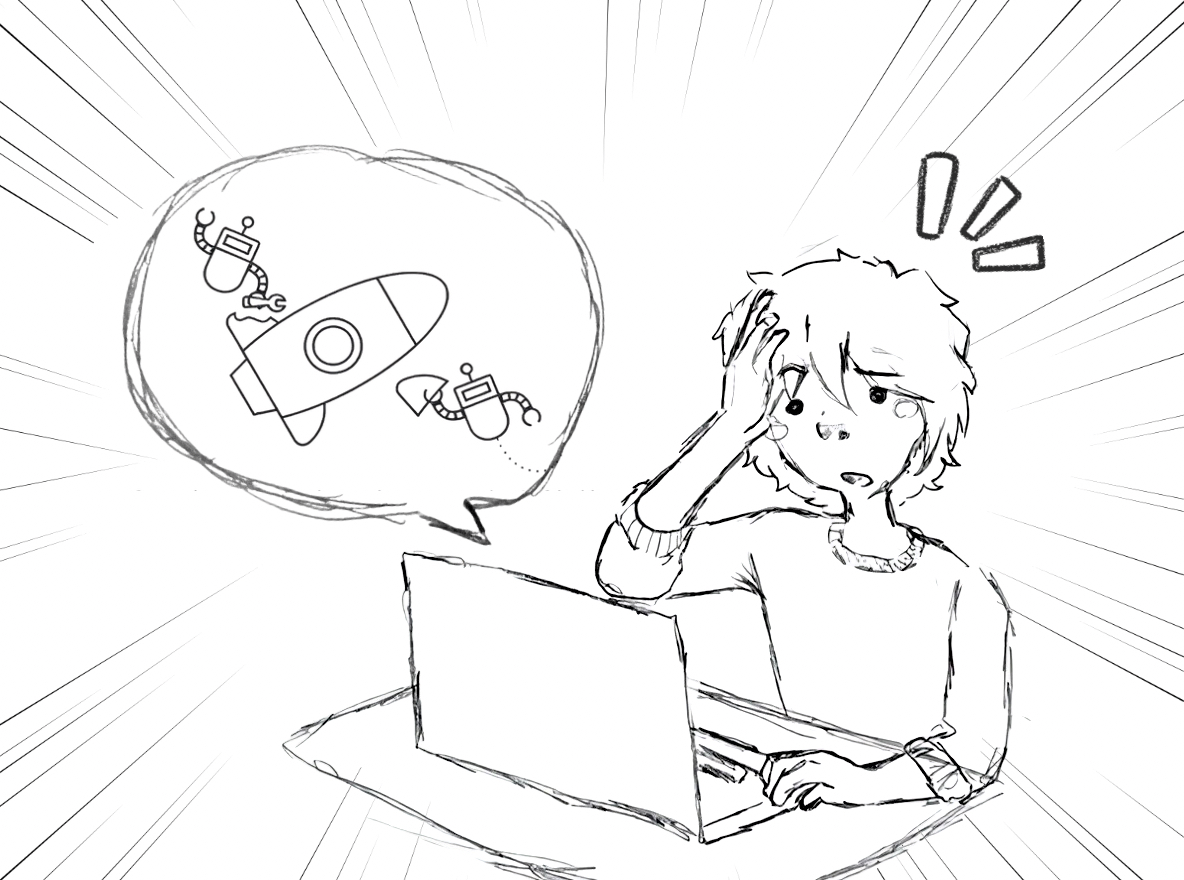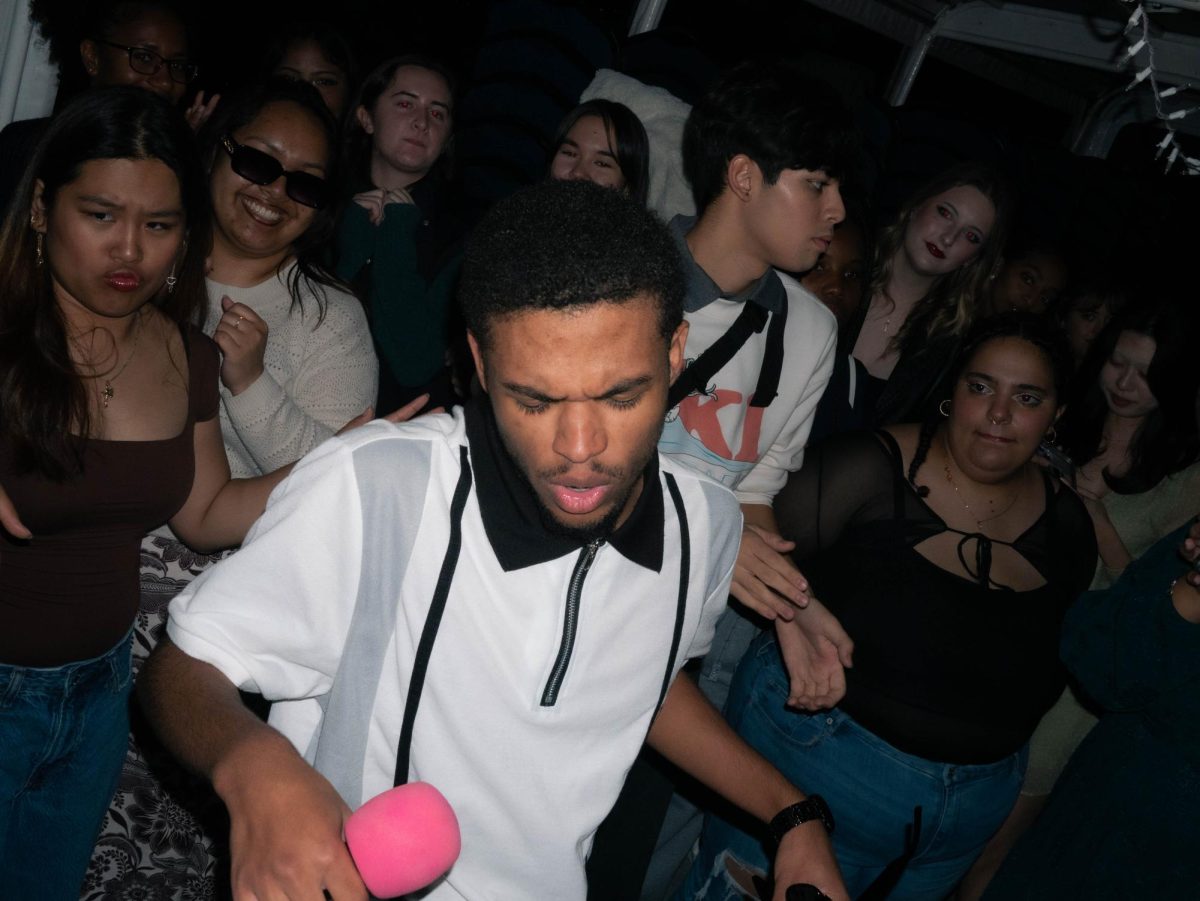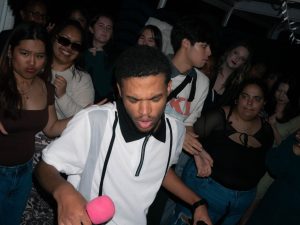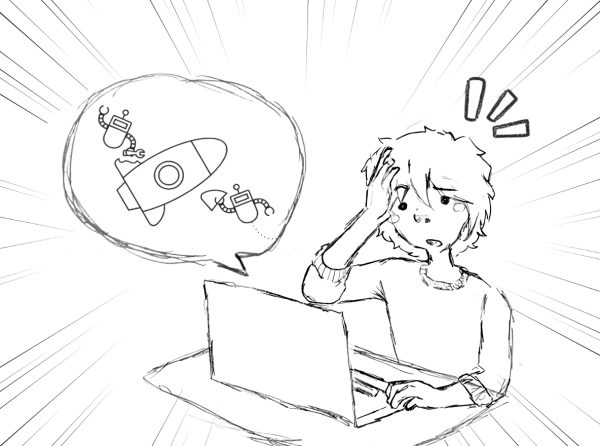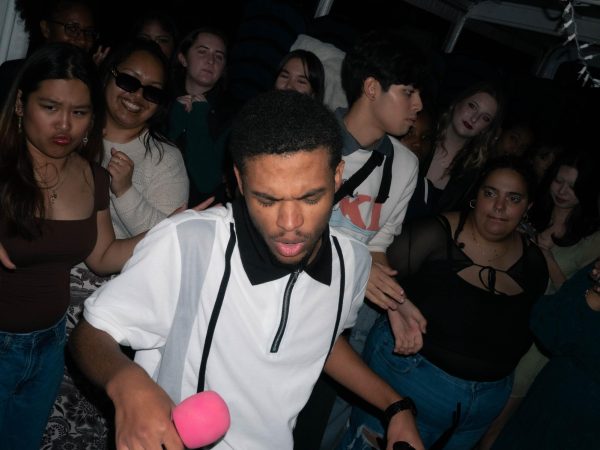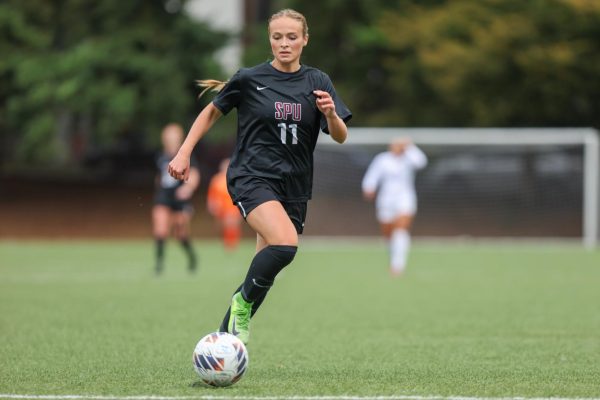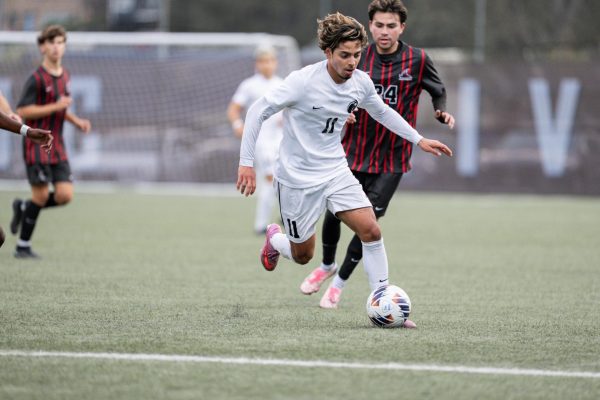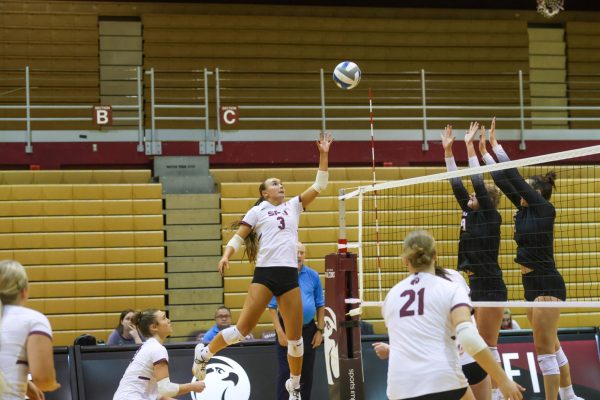Virus brings global perspectives to SPU
International students on difficulties related to COVID 19
May 7, 2020
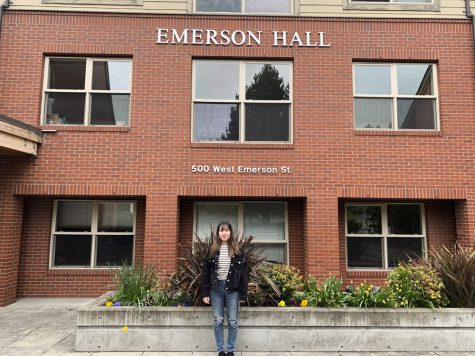
Sae poses for a photograph in front of Emerson Hall before returning to Japan and cutting short her year of study abroad in the U.S due to COVID-19.
Junior communications major Sae Katsube, a study abroad student from Aoyama Gakuin University in Tokyo, should still be in Seattle enjoying her last quarter of study abroad. But, like many other international students, she was forced to make the hard decision to either stay in Seattle or go to her home country. In the end, Katsube decided it was best to return to Japan.
“But at that time, I’d never imagined going back to my home, I was sure I would stay in the U.S. till the end. I didn’t want to leave the U.S. because this is my study abroad, it’s a limited experience and [I had] only three months left so I thought there was no problem to stay at the dorm and spend my last quarter here,” Katsube said in an email.
It soon became clear to Katsube that she had to go home, as she feared getting infected by COVID 19 in the United States, which had quickly become the country with the highest amount of confirmed cases. More importantly, she feared that if she did not go home, Japan would close its borders and she would be stuck in a foreign country.
This struggle is one many international students have had to go through, although not all have been able to go home. Regardless of their decision, it is clear that students from abroad have a particular experience of the pandemic that few students share.
Junior Ellie Huynh, a business administration major from Vietnam had to make a similar decision and ultimately chose to stay in the U.S.
“A lot of my friends flew back to their home country, but then my parents didn’t want me to because they were afraid of [me] getting infected. But then the U.S. became the worst situation and my country closed the borders,” Huynh said.
Huynh is left having to negotiate with the Vietnamese embassy in the U.S. to try to get a flight home on a plane from California specifically set up for Vietnamese international students, but it is extremely difficult to get a seat.
She also described the struggle of getting back to the U.S. if she was unable to go back to Vietnam. It could lead to her being stuck in a foreign country or not being able to come back to the US all due to the closure of the U.S. embassy in Vietnam.
Another complication has led freshman clinical counseling psychology major Joo Hwan Lee to stay in the U.S. For Lee, the time difference between his home and Seattle would make classes much more difficult.
Originally from South Korea, Lee’s parents are missionaries, meaning that returning “home” would mean attending classes in India. This would require him to do the work for his classes at night.
“I personally wouldn’t enjoy doing classes at night,” said Lee, who decided to stay in Seattle and live in the dorms.
For students who, like Katsube, did decide to go to their home countries, attending synchronous classes has presented problems.
“I’m taking three courses (12 credits) in this quarter. I have one class that starts at 12 a.m. and ends at 1:20 a.m. in Japan,” Katsube said.
This late night schedule is incredibly taxing to many of these students. Luckily, Katsube said that many of her other professors record their Zoom meetings and upload them to Canvas, making the schedule less strenuous.
Nevertheless, Katsube said it has been a struggle.
“Compared to some of my international friends who wake up until 3-5 a.m. in the morning, it doesn’t look tough. But I’m so exhausted taking class at midnight,” Katsube said.
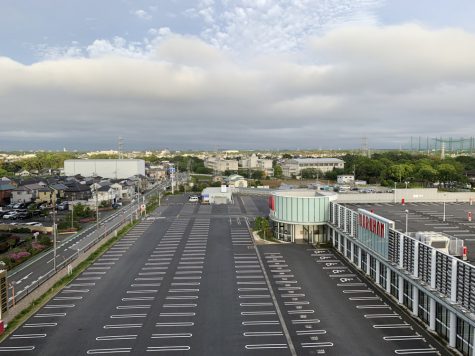
Roads and parking lots in Japan were empty upon Sae’s return home, in the midst of stay at home orders there.
While having to deal with particular struggles related to studying from home, international students have gained dual perspectives of the virus.
Katsube described how Japan has not been hit as badly as the U.S. despite the Japanese government having taken less actions to curb the pandemic.
“The biggest difference is that there are no laws that can fine people who go outside. So, the only way the Japanese government can do this is ‘request’ or ‘demand’ people for stay at home,” Katsube said.
Huynh described how the Vietnamese government began testing those entering the country and made quarantining efforts for those infected almost immediately.
She described how, because of this, it seems that they have not had as many cases. Not only that, but, as in Japan, masks are not mandatory.
Huynh and Katsube both acknowledged that, instead, in Japan and Vietnam it is custom to wear masks in times like these. Therefore, it is not uncommon to see people wearing masks to protect themselves without government intervention.
Despite the unique struggles prescribed to these students, they have been able to witness the reactions of different cultures to the global pandemic. But that does not eliminate the sadness many feel at being forced to choose between going home or staying in the U.S.
“I know I can’t help it, but it is still sad for me and stresses me out that I can’t finish my study abroad in Seattle. But what I should do right now is to do everything that I can do with my best,” Katsube said.

